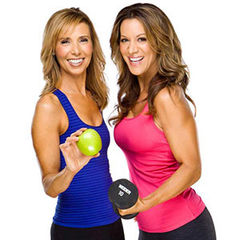There are numerous ways to classify food—low fat, high sodium, low fiber, high sugar, clean, gluten free, vegetarian, lactose free, to name a few. But what if you were told the path to good health was to eat only “alive” food and avoid “dead” food?
Ditch the Dead Food
So, what exactly is a “dead” food? If it can sit on your counter for days or weeks and not go bad, then it’s a dead food. These foods are refined, highly processed, often synthetic and have little-to-no nutritional value. Think about foods like cheese-flavored crackers, meal replacement bars, fruit snacks and flavored beverages. Chemicals? Check. Artificial colors and flavors? Check. Ingredients on the label that you can’t pronounce? Check.
Unfortunately, these processed, chemical-rich foods are pervasive in the American diet. We want fast, convenient and tasty food and there’s plenty on the supermarket shelves that fit the bill. And what has been the result of a diet full of dead foods? Rising rates of obesity, heart disease, diabetes and cancer, among other things.
Mainstream medicine is finally recognizing that processed and refined foods are linked to increased inflammation in the body. A steady diet of dead foods leads to chronic inflammation, which can result in increased blood pressure, weight gain, elevated blood sugar levels and arthritis, to name a few. The human body is not designed to function properly under stressful conditions (poor nutrition) and will react and respond to these inflammatory foods, which manifest itself in aches, pains, brain fog, poor sleep and hormonal imbalance, in addition to the aforementioned diseases.
But it doesn’t have to be this way. Ditching the dead food for a diet rich in “alive” foods will put you on the path to better health.
Live Better With Alive Food
Let’s get back to the basics to discover what “alive” foods are and how they help the body. A food that is “alive” is one that is as close to its original, natural form—plants (fruits and vegetables), nuts and seeds, fish, poultry and whole grains. These foods are rich in inflammation-fighting antioxidants and phytochemicals. They help the body produce and activate enzymes, which are necessary for hormone production and chemical reactions in the body. In addition to these foods, foods rich in probiotics and prebiotics are also considered “alive” as they help promote the healthy bacteria in your body that are the first line of your immune system. These foods include kefir, miso, bananas, asparagus and Jerusalem artichokes.
Choosing alive foods begins in the supermarket or at your local farmers market. First, head over to the produce section and fill your basket with a rainbow of organic fruits and vegetables. Try to choose what’s local and in season. Next, add protein sources, such as eggs, organic poultry and wild-caught, omega-3-rich fish, such as Alaskan salmon or Pacific halibut. The dairy section must be navigated carefully, as there are many foods with artificial colors, flavors and sweeteners lurking around. Choose kefir and organic plain yogurt that has live and active cultures. Finally, head to the middle of the store to pick up your whole grains, such as quinoa (it’s really a seed but classified as a grain), brown rice, oats, nuts, nut butters, seeds and beans.
Another important tip for successfully choosing alive foods is to read labels. The ingredient list will tell you whether or not the item contains chemicals, preservatives or anything artificial. Generally, a product that comes in a box, bag, can or package will have some kind of preservatives to increase shelf life. If you can’t pronounce an ingredient or have no idea what it is, you should probably put it back on the shelf. An item with a quick expiration date is more often “alive” because of the lack of additives. And most of the previously mentioned alive foods do not come in a package (fruits, veggies, poultry, fish). Beans (dry or canned), nuts (preferably raw), nut butters (again, raw is best), whole grains, and sprouted grain bread are some of the packaged “alive” foods that we recommend.
Here’s a comparison of alive versus dead versions of the same food:
Alive vs. Dead Foods
|
Potato |
French fries, potato chips |
|
Chicken |
Chicken nuggets |
|
Banana |
Banana chips |
|
Oats |
Instant oatmeal (flavored and sugar) |
|
Water |
Crystal Light |
|
Salmon |
Fish sticks |
|
Berries |
Fruit snacks |
|
Almond butter |
Nutella |
If you desire to make any dietary changes to eat healthier, but feel overwhelmed with how to do so, start out slowly. Change one meal at a time. Of course, cleaning out the refrigerator and pantry and filling them with healthier alternatives will make the transition much easier and allow for a greater level of success.
Changing your diet to ditch the dead food and instead focus on alive foods is the nutritional approach for decreasing inflammation, regaining your health, and looking and feeling your best.




 by
by 





 by
by